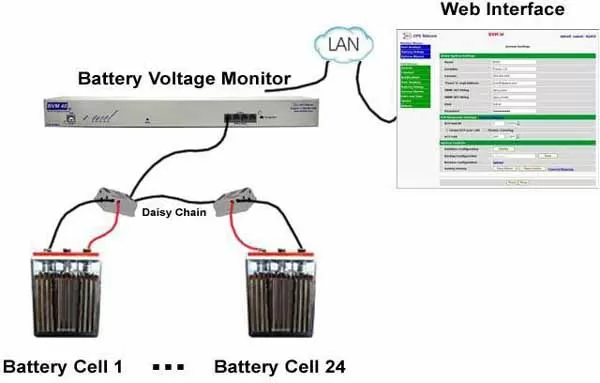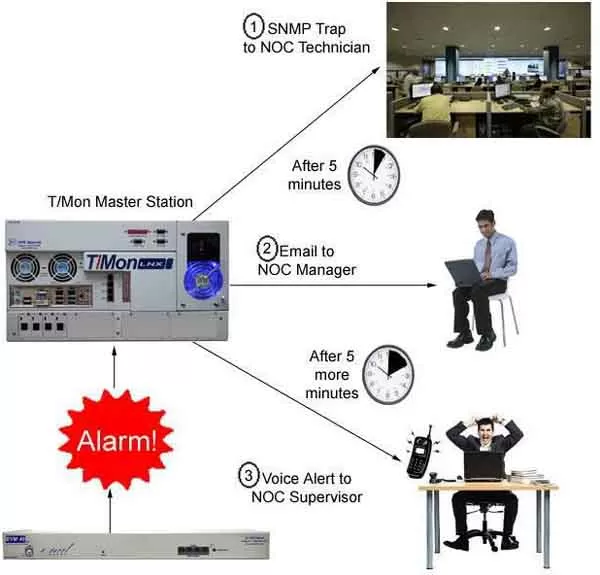Check out our White Paper Series!
A complete library of helpful advice and survival guides for every aspect of system monitoring and control.
1-800-693-0351
Have a specific question? Ask our team of expert engineers and get a specific answer!
Sign up for the next DPS Factory Training!

Whether you're new to our equipment or you've used it for years, DPS factory training is the best way to get more from your monitoring.
Reserve Your Seat Today Related Topics:
Battery Voltage
Unfortunately, not all battery voltage monitors are created equal. It's far too common for a vendor to cut corners and skimp on critical features you truly need. These types of systems trick you into a false sense of security - you think you're adequately monitoring your battery cells, but in reality, you're just as exposed.
What does it take, then, to maximize coverage of your battery cells - ensuring that a small problem won't snowball into a serious outage? Here are some of the essential features your battery voltage monitor must have:
You want your battery monitor to have the ability to work with different battery types and voltages. Not all batteries are the same. They have different orientations, connectors, and different voltage ranges - for instance you might have a standard string of batteries or a string with 4 12V cells and propriety connectors. An adaptable battery voltage monitor means you'll be able to support multiple types of batteries, and won't be forced to use multiple monitors on different cells.

You have to have sensors that isolate voltage locally. This allows for more accurate battery readings and creates a safer environment. Keeping the voltage reading local (then transmitting a digital signal back to the NetGuardian) means you have accurate cell readings and you don't have to deal with the hazards of transporting battery voltage.
Your battery voltage monitoring equipment needs to provide you with continuous voltage readings. Without regular monitoring or at least control over the sampling rate, a problem can linger for too long before you're notified.
That's why sampling your batteries at too long of intervals can be so problematic. Your battery cells can easily become fully discharged between lengthy interval readings, which means you risk losing power at your sites and won't have any idea until the entire site suddenly goes dark. With real-time monitoring and customizable interval sampling, you can be assured you'll know about these kinds of emergencies before they bring down your mission-critical network equipment.
If your battery voltage monitor can't accurately measure voltage and temperature, then you might as well have no monitoring at all. An effective battery monitor will be able to provide you with accurate readings within 1% of the actual value. Inaccurate readings means you won't ever know the true status of your batteries - catching you off-guard the next time a problem is missed that would have otherwise been caught.
No matter how diligent they are, there are some occasions when your technicians are unable to respond to an alarm. By deploying a device that features an escalation list, you won't have to worry about a single technician missing an alarm. You can program multiple people into your escalation list, so when there's a critical alarm, and the first technician doesn't acknowledge the alarm, another technician will be notified.

Escalating alarms are critical in any thorough battery voltage monitoring system. You'll never have to worry about an alarm going unacknowledged for hours at a time. Backup plans are the key to improving reliability and preventing outages.
What good is a battery voltage monitor if it has no way of reporting problems to you? With a device that supports SNMP, you'll be able to receive SNMP traps to a central NOC or master station to notify you if there's an issue with your batteries. This means you can easily bring battery monitoring under your SNMP monitoring umbrella. Notifications are the key to preventing outages caused by issues with your batteries.
Superior Visibility with the BVM 48 G2 Battery Voltage Monitor
This RTU was designed with one purpose in mind: To monitor battery cell voltage and temperature for the best visibility over your power supplies. The BVM 48 G2 monitors up to 48 total cells and reports alarms via SNMP to any SNMP manager (like the T/Mon master station). This battery voltage monitor also comes standard with an integrated web interface that boasts several tools that make managing your batteries simple and easy.
Battery Voltage Monitoring Devices:
The BVM 48 G2